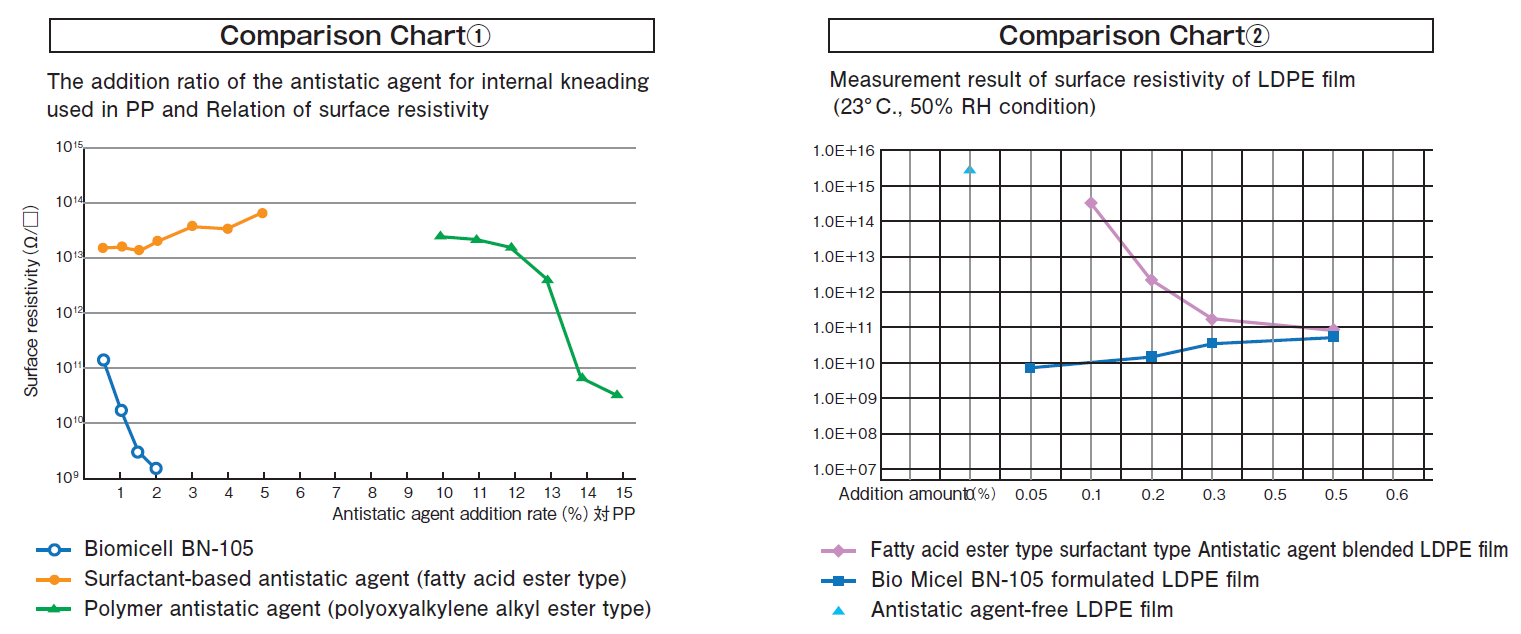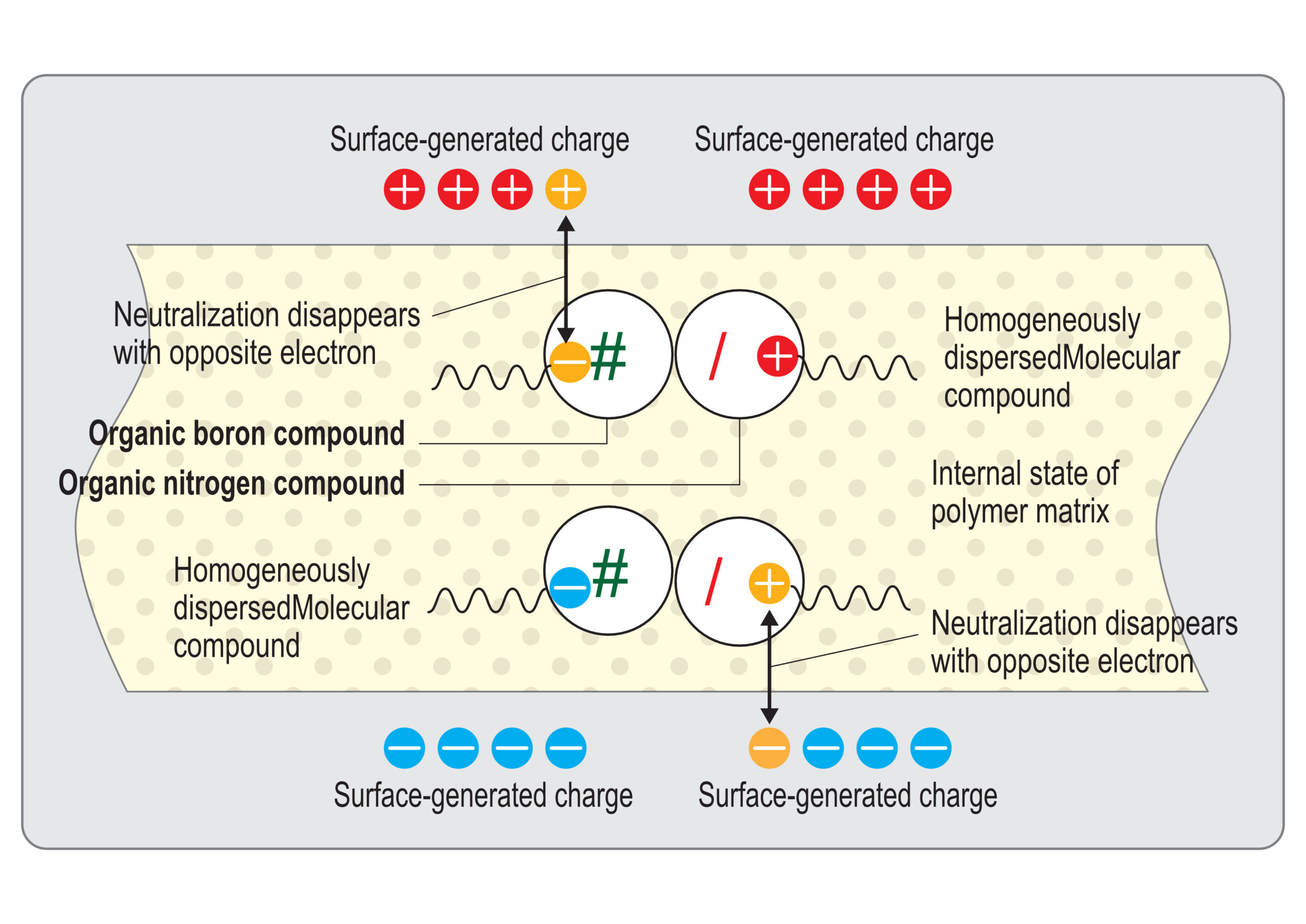
Biomicelle® BN-105
Biomicelle® BN-105: Pioneering Innovation from Japan
Biomicelle® BN-105 is a groundbreaking innovation from Japan, a unique synthesis of semi-polar organic boric and specific basic nitrogen compounds. This innovative compound maintains exceptional stability under multiplex Van der Waals forces, particularly when integrated with resins containing methylene bonds (-CH2-).
The superior static dissipative function of Biomicelle® BN-105 is derived from this advanced mechanism. Typically, molecular compounds bond through Coulomb energy. However, when static electricity is generated, charge transfer occurs, instantly converting the molecular compound into ion pairs, thereby initiating continuous static dissipation.
Key benefits
Versatile Application:
Ideal for resins with methylene units (-CH2-), including rubber-based materials like SEBS, PE, PP, ABS, PET.
Efficient Antistatic Effect:
Provides antistatic properties even in small quantities, ensuring the resin’s performance remains uncompromised.
Long-Lasting Stability:
Can be used semi-permanently without bleeding out, maintaining effectiveness over extended periods.
Features
When homogeneously added to products, this molecular compound disperses evenly throughout the entire matrix. It effectively reforms the product by instantaneously neutralizing static electricity, regardless of whether the charge is positive (+) or negative (-). This efficient mechanism allows for the use of small amounts without compromising performance.

Additional Information
Principle of Molecular Compound Type Antistatic Agent
Discover the innovative mechanism behind our molecular compound type antistatic agent, which differs from conventional products that rely on ionic conduction. This unique compound features a bond between nitrogen (N) and boron (B) components, creating a special structure with both negative (―) and positive (+) electrons.

When uniformly dispersed in a resin matrix, this molecular compound generates electric charges (static electricity) both inside and outside the resin. The adjacent molecular compounds then act immediately to neutralize and extinguish these charges, ensuring continuous dissipation of static electricity.
As a result, all charges within the matrix are eliminated, leaving no residual charge. Even when an applied voltage is introduced, the system achieves complete attenuation, reducing the voltage to 0 volts.
This type can be kneaded into various resins:
LDPE, HDPE, EVA, PP, POM, PVC, COP, COC, TPX, PA, PET, PBT, EPDM, PU, PS, SEBS, PVDF, & various rubber products, acrylic sheet, acrylic molding goods, acrylic caoting materials, silicone products.
Properties
Chemical Structure:
Molecular Compound Featuring Donor [B] and Acceptor [N] Components
Appearance (at 20°C):
White crashed solid
pH (at 20 °C, 1 % aq. – IPA solution):
8.0 – 9.5
Melting Point:
60 °C +/- 2 °C
Chemicals
Vadym Kharchenko
Unit Manager